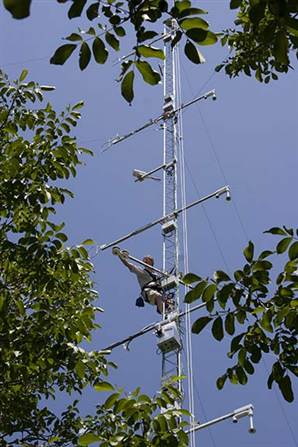A while back, I have reported about a successful citrus farmer that uses aspirin concoction for his citrus plants. His plants have greening disease, naturally, he is in the middle of greening disease hell. But his citrus plants did not show decline and remained productive. So many scientists began flocking there and looking up his practices.
Anyway, here is surprising proof that plants can manufacture their own painkillers. Perhaps in citrus, you need to give them an extra boost by applying aspirin type concoction in times of stresses or diseases.
One thing to really note about this article is how the extreme diurnal fluctuations of temperature, like in typical California, can induce plants to produce such chemicals. Perhaps, one thing to do great experiment would be to determine the effects of aspirin and related compounds on blood orange trees when you don't have extreme fluctuations in temperature such as those in the tropics like the Philippines or Florida. If aspirin didn't work, perhaps similar compounds can be used. Since, I haven't seen any literature about this topic, it is a good thing to try, perhaps to induce the pigmentation by starting off with aspirin concoctions.
At any rate, this new article is further proof on how salicylate type compounds can dramatically help plants tide over various stresses, and that could include diseases.
Joe Real
Plants make their own painkillers
Aspirinlike substance may soothe stress and signal alarm to other plants

Image: Measuring emissions. Carlye Calvin / UCAR. Scientists used specially equipped towers to measure chemical emissions from plants in a walnut grove in California.
When you have a headache, you take a couple of aspirin, but when plants get stressed out, they just make their own.
Scientists had known that plants in laboratories produce a chemical called methyl salicylate a form of the painkiller aspirin when stressed out, but they had never detected it in plants out in nature.
A team of scientists from the National Center for Atmospheric Research in Boulder, Colo., discovered by accident plants in the wild emitting methyl salicylate. They set up instruments last year in a walnut grove near Davis, Calif., to monitor plant emissions of certain volatile organic compounds, or VOCs. Such compounds emitted by plants can actually combine with industrial emissions and contribute to smog.
To their surprise, the NCAR scientists found that the emissions of VOCs their instruments recorded in the atmosphere included methyl salicylate.
They noticed that the methyl salicylate emissions increased dramatically when the plants, already stressed by a local drought, experienced unseasonably cool nighttime temperatures followed by large temperature increases during the day.
Scientists think that the methyl salicylate has two functions: stimulating a process similar to the immune response in animals that helps plants resist and recover from disease, and acting as a form of chemical communication to warn neighbors of threats.
"These findings show tangible proof that plant-to-plant communication occurs on the ecosystem level," said study team member Alex Guenther. "It appears that plants have the ability to communicate through the atmosphere."
The research, funded by the National Science Foundation and detailed in the Sept. 8 issue of the journal Biogeosciences, could give farmers and forest managers an early warning signal that all is not right with their plants, either because of disease, insect infestation, or other types of stress.
"The earlier you can detect that something's going on, the more you can benefit in terms of using fewer pesticides and managing crops better," said study leader Thomas Karl.
Methyl salicylate and other plant hormones emitted into the atmosphere could also account for some of the fraction of VOCs scientists had suspected were in the atmosphere but had escaped detection until now.
Article:
http://www.msnbc.msn.com/id/26782593/ 














